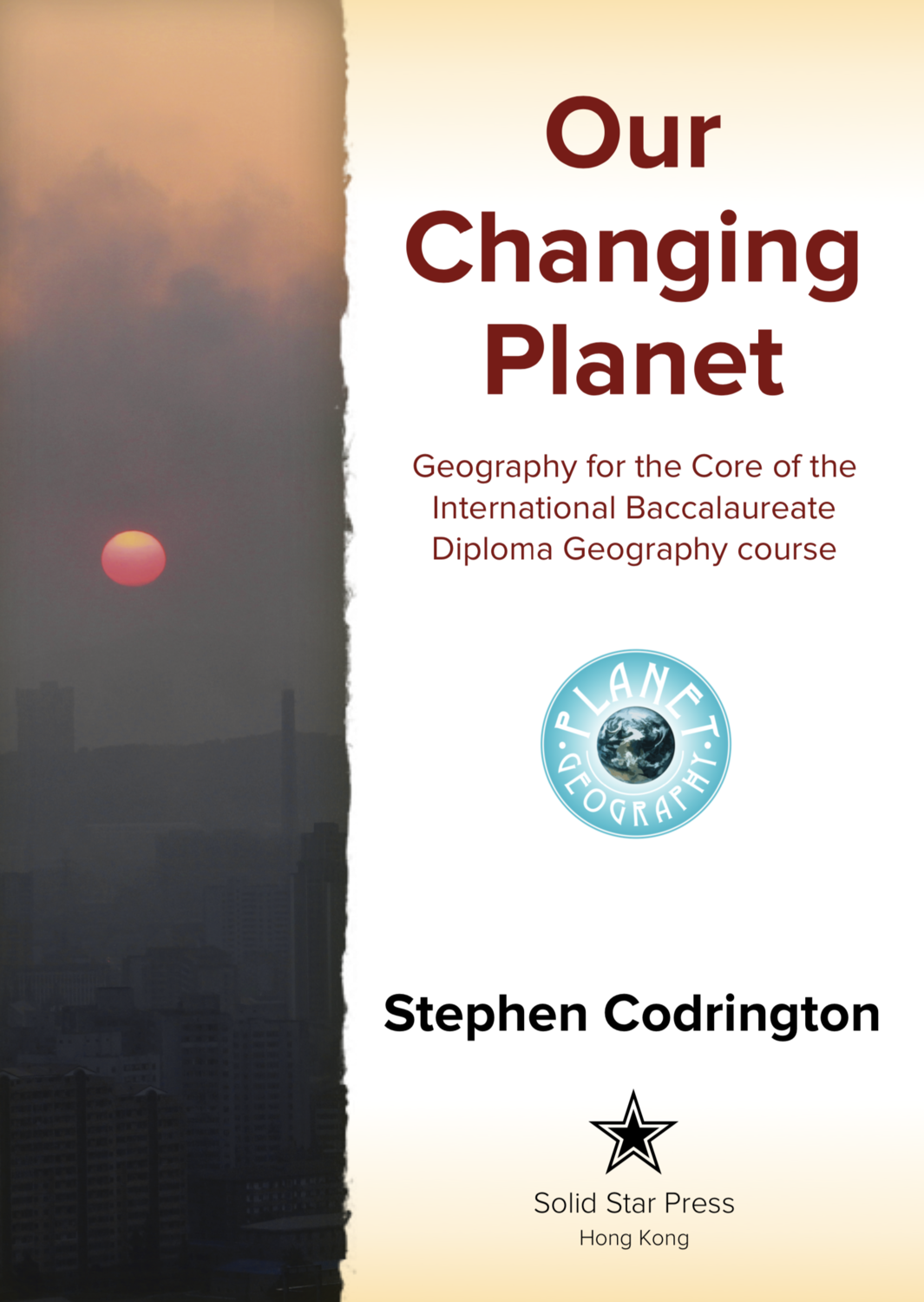Our Changing Planet
Our Changing Planet covers all parts of the Standard Level and Higher Level Core for IBDP Geography Paper 2. The book contains 336 pages in full colour, 17.2cm x 24.5cm, with 9 chapters that mirror the structure of the syllabus.
Chapter 1 is ‘Patterns of population and economic development’. It comprises 48 pages divided into three sections:
- • Population distribution
- • Economic Development
- • Comparative case studies of population and economic development in Papua New Guinea and China
Chapter 2 is ‘Changing populations and places’. It comprises 48 pages divided into seven sections:
- • Population change
- • Comparative case studies of population change in Cambodia and Russia
- • Megacity growth
- • A case study of Shenzhen, China
- • Forced migration and internal displacement
- • A case study of forced migration from Syria to Turkey to flee political conflict
- • A case study of forced migration in Niger to flee environmental problems
Chapter 3 is ‘Challenges and opportunities’. It comprises 28 pages divided into four sections:
- • Population trends
- • Population Policies
- • The demographic dividend
- • A case study of the demographic dividend in Vietnam
Chapter 4 is ‘Causes of global climate change’. It comprises 23 pages divided into three sections:
- • The atmospheric system
- • The natural greenhouse effect
- • The enhanced greenhouse effect
Chapter 5 is ‘Consequences of global climate change’. It comprises 32 pages divided into two large sections:
- • Consequences of global climate change
- • Impacts of climate change
Chapter 6 is ‘Responding to climate change’. It comprises 44 pages divided into five sections:
- • Climate change risk and vulnerability
- • Contrasting case studies of the responses to climate change in Kiribati and Turkmenistan
- • Government-led adaptation and mitigation
- • Civil society and corporate strategies to address climate change
- • Case study of a civil society response by providing biogas to farming villages in Guizhou, China
Chapter 7 is ‘Global trends in consumption’. It comprises 42 pages divided into three large sections:
- • Poverty reduction and the new global middle class
- • Trends in resource consumption
- • Global patterns and trends
Chapter 8 is ‘Impacts of changing trends in resource consumption’. It comprises 30 pages divided into four sections:
- • The water-energy-food nexus
- • The implications of climate change for the water-energy-food nexus
- • Comparative case studies of the water-energy-food nexus in Albania and Kyrgyzstan
- • The disposal and recycling of consumer wastes
Chapter 9 is ‘Resource stewardship’. It comprises 48 pages divided into four sections:
- • Divergent thinking about population and resource consumption
- • Resource stewardship strategies
- • The circular economy
- • The Sustainable Development Goals (SDGs)
